What’s the best brush for painting miniatures? Paint brushes are an essential tool for miniature painting. The most popular and useful brushes for miniature painters are a pointed round kolinsky sable size #1 or #2 brushes. These paint brushes have a bristle length of about 8-12mm and a belly diameter of 1.5-2mm. A pointed round brush shape and size allows you to paint miniatures efficiently, helping you to apply paint and blend colors on a mini’s surface. With a high quality sable or synthetic brush, you can paint details with precision.
In this article, I show you what to look for in the best brush for your miniature painting hobby. Of course, a miniature painter’s favorite brush is personal. What brush works for you, may not be the best for someone else.

In a Hurry? CHeck out the 3 best Brushes for Painting Miniatures! 🏆
- Winsor & Newton Series 7 size 1 (Most popular and recommended)
- Da Vinci Watercolor Series 10 Maestro size 1 (Best professional alternative to the W& N Series 7)
- The Army Painter Regiment (An all-purpose workhorse brush; see the in-depth review)

Key Takeaways
Selecting the optimal brush for painting miniatures is a critical step for achieving professional-level results. A superior brush can dramatically improve the appearance and quality of your miniature painting. Below are the crucial features to consider:
- Material: Opt for natural Kolinsky sable tufts for better paint retention and application.
- Ferrule Construction: Choose metal ferrules that are not crimped to the handle, as crimping indicates less reliable quality.
- Bristle Shape: The ideal shape is pointed round, allowing for precision without sacrificing paint load.
- Bristle Size: Aim for bristles around 10 mm in length and dense enough to form a 2mm diameter.
- Responsiveness: The bristles should be snappy or springy enough to return to their original shape even when wet. This needs to be tested in-person before purchase.
- Tip Quality: Look for sharp and uniform tips without stray hairs, as imperfections may indicate issues that could arise later.
- Cost: Expect to pay between $15-35 USD. While this may seem steep compared to basic craft brushes, investing in a high-quality brush can enhance your painting experience.
Read on to learn more about what to look for in paint brushes for miniature hobbies with my recommendation for how you can find your ideal brush.
5 Key Features of PAINTBRUSHES
- Capacity
- Point
- Snap
- Spring
- Flow and Release
1. Capacity
Brush capacity determines how much paint a brush can hold. More capacity means you won’t have to reload your brush with paint as often. This is great for base-coating or applying paint over large surfaces. This also means that for color blending, having good capacity allows you to more easily perform more advanced paint blending techniques.
2. Point
The point determines how well the brush comes to a sharp point after it is wet. This is the first thing you notice when you buy a brush: how sharp the brush point is. Any good quality pointed round brush, sable or synthetic, should have a sharp point when brand new. The key is finding a brush that can keep that point over a long period of use.
3. Snap
The snap of a brush is the most noticeable attribute of paint brushes. Snap determines how easily a brush will return to its straight shape (e.g., lengthwise along the brush handle). Good snap will allow you to have the most control over your paint work.
Winsor & Newton Series 7 brushes have excellent snap. They are famous for it. On the other hand, Raphael 8404, another great paint brush for miniatures, has a less snap, but awesome capacity. Check out a great budget alternative to the expensive kolinsky sables.
4. Spring
Spring is related to the resilience of a brush to change shape. It’s the bounce when you press your bristles to a surface. A brush with good spring will help you wet-blend acrylic model paint.
A brush with excellent spring will help you move paint around in a controlled way. You’re not fighting the brush. It’s working with you. You can sweep paint where it needs to go. Another great technique with a brush with good spring is loaded brush blending.
5. Flow and Release
This brush attribute refers to the ability of a brush to release paint from its bristles onto a surface medium. For miniatures, a good amount of flow and release will help you get that tiny bit of paint applied to details, e.g, eyes, raised edges.
The best brushes will have a predictable flow and release. Natural sable brushes are some of the best brushes for providing painters with controlled paint release. It’s one of the reasons why watercolor painters love using kolinsky sable brushes.
MORE: 5 MUST-KNOW PAINTBRUSH CHARACTERISTICS FOR PAINTING MINIATURES
Features to look for in a brush for miniature painting
Here are features I recommend you look for in the best brush for painting tabletop gaming miniatures:
- A brush with a pointed round shape
- Size #1 or #2 for all-around use
- Bristle length of about 8-12mm
- A belly diameter of 1.5-2mm
These brush features, i.e., shape and dimensions, you will have a more efficient miniature painting experience. For base-coating, priming, or other common paint blending applications, e.g., layering and glazing, you can use a large pointed round brush. With a higher quality bristle hairs, a brush will hold more paint and have reliable paint flow. This will provide a lot of the pleasure of using a kolinsky sable paint brush.
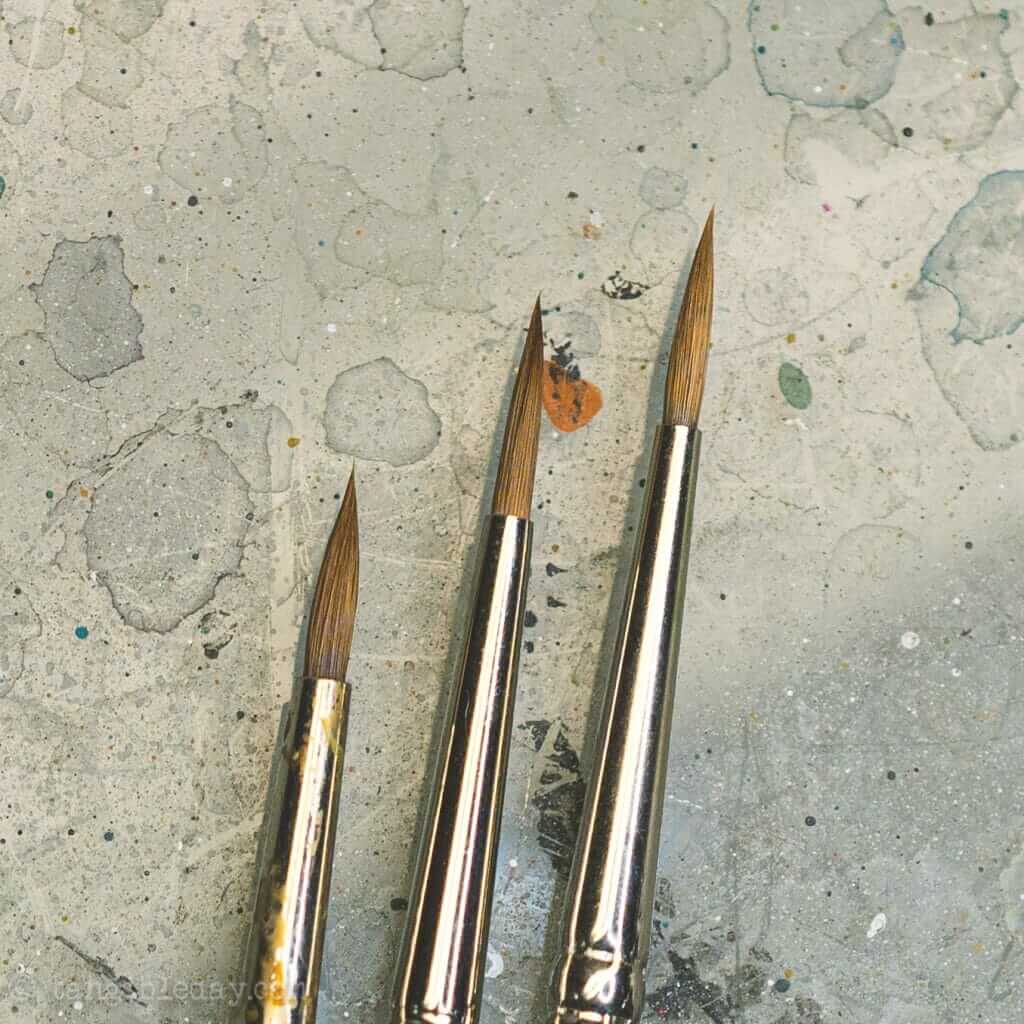
If the brush has a sharp, snappy tip and springs back into shape after each stroke, you’ll have a much easier time painting details. Both quality synthetic and natural hair bristles in the range of sizes above will be the best go-to brush for a majority of your miniature painting work. Good snap or spring will help you paint with more control and confidence.
READ MORE: GREAT HACKS FOR RECYCLING OLD BRUSHES
What is the most Popular Brush for painting tabletop gaming Miniatures?
What brush do most people recommend for painting Warhammer 40k or other tabletop gaming miniatures?
The most popular brand of high end paint brushes for painting miniatures for game models is the Winsor & Newton Series 7 paint brush in a size #1.
The Winsor & Newton Series 7 brush is the most referenced brush in the miniature painting community when asked about the best brush for painting miniatures. It’s not surprising, really. Winsor & Newton is an old British company that had made a name for themselves by making brushes for artistically inclined UK royalty. Renown for high-quality, handmade paint brushes, the W&N carries a lot of weight in many art circles.
W&N Series 7 brushes use high-quality kolinsky sable, which provide you with all the best features for painting miniatures. Series 7 brushes have great snap, spring, tip shape retention, and paint capacity. Because they are made of natural hair, these brushes also have predictable paint flow characteristics.
As a new painter, a Winsor & Newton Series 7 brush can help you learn different techniques without your tool getting in the way. More importantly, you’ll learn how to properly care for a brush that will last you a very long time.
A Winsor & Newton Series 7 brush won’t be cheap compared with conventional hobby paint brushes, e.g., Citadel base or layer brush. But, with proper care, a Series 7 kolinsky sable brush will last you a very long time. You can expect these brushes to stay in great working condition for a least a year or more of heavy use. For a budget friendly alternative to the W&N Series 7 paint brush, check out this article.
| Winsor & Newton Series 7 | Check Price |
|---|---|
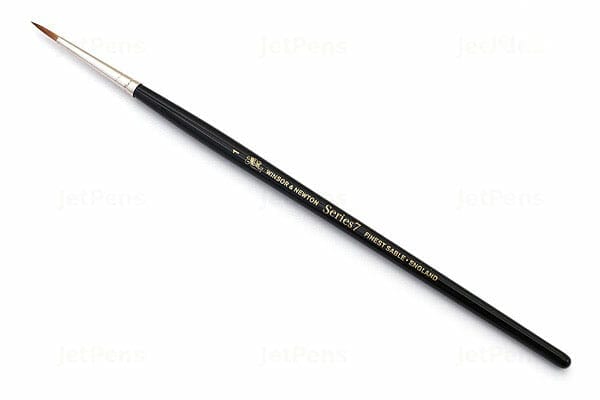 |
Buy on Amazon Buy on Blick Art |
How to Discover Your ideal paint Brush
When I did my initial research online, everywhere really, I wanted the tool that could do the most work (versatility) with precision and control. I wanted a paint brush that would allow me to freehand or paint details of a miniature without frustration. In other words, I was looking for specific qualities of paint brush size, shape, and bristle quality that were ideal for painting miniatures.
Finally, I needed a small paint brush that was efficient. This means that the brush needed to hold a good amount of wet paint so I didn’t have to refill/dip it into my paint pot/bottle after every stroke. When it comes to pure painting speed, getting the job done quickly, I discovered my favorite workhorse brush: the Citadel Medium Basing brush.
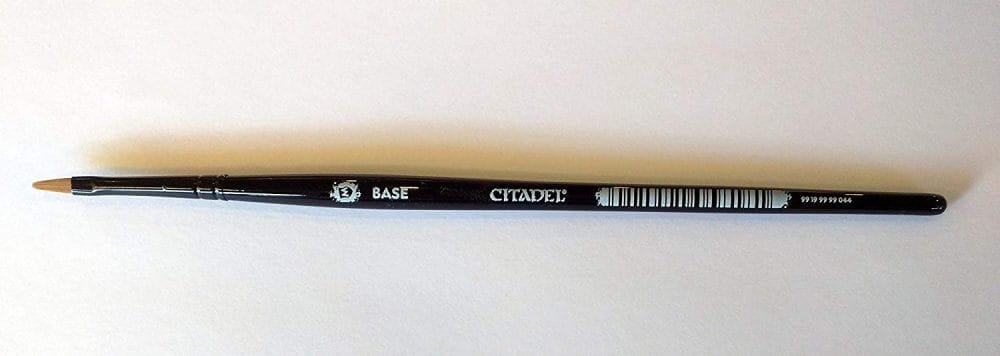
As someone who is learning, you may have already been to a local art store. Have you seen all the types of brushes there are? So many! It’s like shopping for shoes. You only need one, but the choices are endless.
Three Key Qualities That Define an Excellent Brush for Miniature Painting
- Efficiency
- Paint capacity
- Precision
For more fine detail painting, however, you will need something a bit more delicate. What brushes are worth your money? It depends on what you want to do. Are you painting a horde army of models? In other words, are you trying to paint fast across a lot of models as fast as you can?
Speed painting an army of miniatures will destroy any brush. In this case, I would recommend synthetic brushes for your speed painting needs. Even painting to a tabletop standard doesn’t require expensive brushes.
But, if you want to win miniature painting competitions, you’ll want brushes that give you the most control over paint. You want brushes that let you blend paint smoothly and accurately. For high quality, display level painting, I would suggest you look for the best natural sable brushes you can buy.
Of course, I know some professional miniature painters who are able to paint amazing work with cheap, synthetic brushes. They are the exception, not the norm. Good quality tools will help you learn and grow faster in the miniature painting hobby. They won’t get in your way as you struggle through some painting challenges.
Don’t let crappy instruments slow you down.
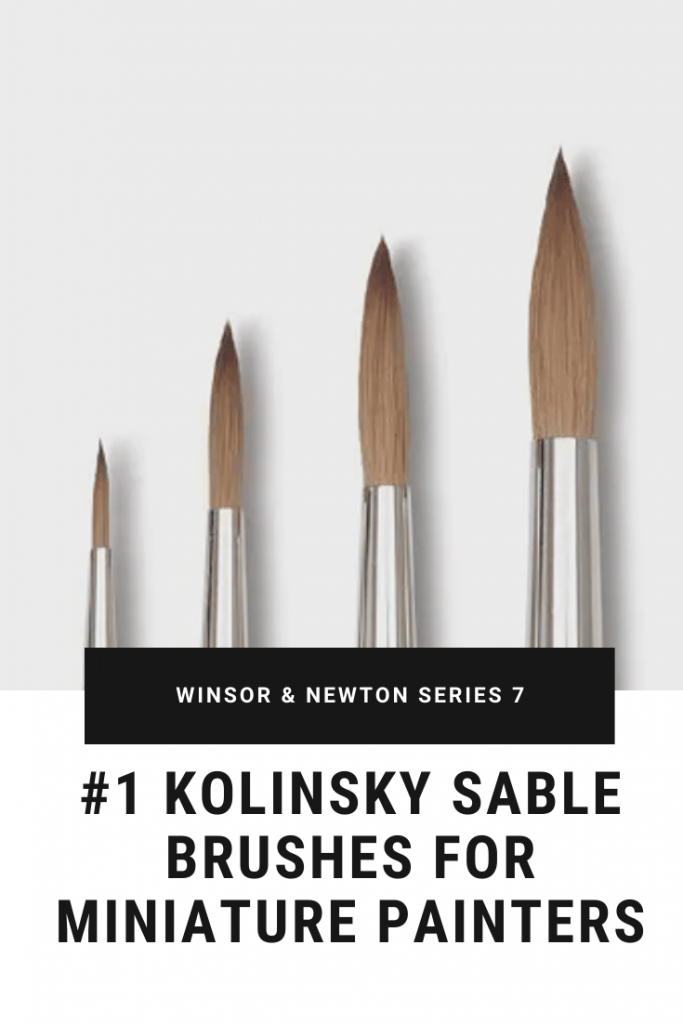
Best Brush Size for Miniature Painting?
Brushes have numbers to define their size. The most useful brush size for painting miniatures is a pointed round with a size #0, #1, or #2. For professional or hobby level quality paint jobs, these brush sizes give you the best versatility, providing you with a good balance between paint capacity (e.g., brush belly size) and precision for fine details.
A size #1 is the middle-ground brush size and will be the most versatile for most miniature painting tasks. A size #0 pointed round in most brush brands will give you a sharper tip with better snap and spring at the expense of a less paint capacity.
Note that the brush size number of a particular brand may not mean the same thing for a different brand. For example, a pointed round size #1, does not mean it will have bristles of the length or diameter that is ideal for your miniature painting needs. Instead, here’s a helpful bit of info when shopping for brushes.
For painting miniatures, the ideal paint brush sizes between #0-2 will have a bristle lengths of about 8-12mm and a belly diameter of 1.5-2mm. So, if you’re shopping for a brush and the size numbers aren’t available, or too variable across brands, you can use these bristle dimensions as a standard to find the most useful brush size for painting miniatures.
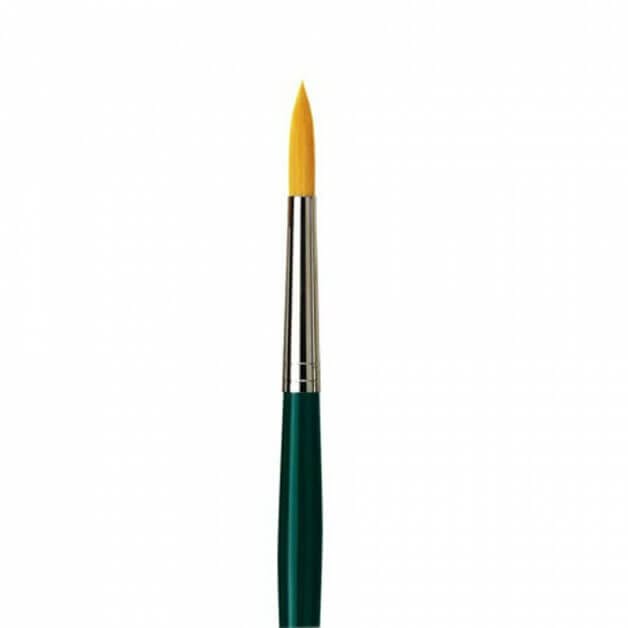
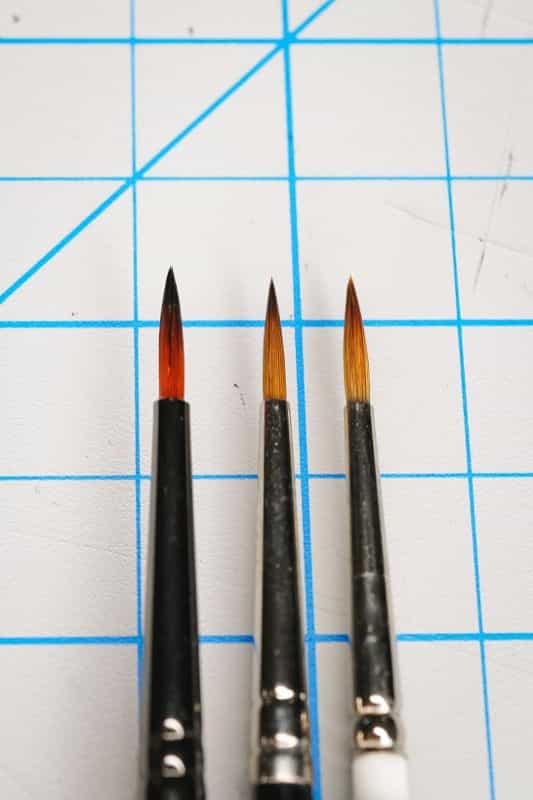
Best Brush Shape for Miniature Painting?
The best brush shape is a pointed round. This shape gives you the most surface bristle area to apply paint (using the sides of a brush, in a swishing or feathering motion), whilst the sharp tip provides for the precision to perform controlled line work required for applying details.

Overview of Paint Brush Parts
Here’s the 3 parts of a brush that you should keep in mind:
- Brush handle
- Metal ferrule
- Tuft (or bristles)
Brush Handle
The handle of a paint brush is usually wood. But, I’ve seen some plastic ones. It doesn’t matter what the brush handle is made of as long as you find it comfortable. If the brush is comfortable you’ll likely use that brush for longer periods of time. I’ve said this elsewhere: You’ll only know what tools works for you if you use that tool for a long time. The same is true for brushes.
Metal Ferrule
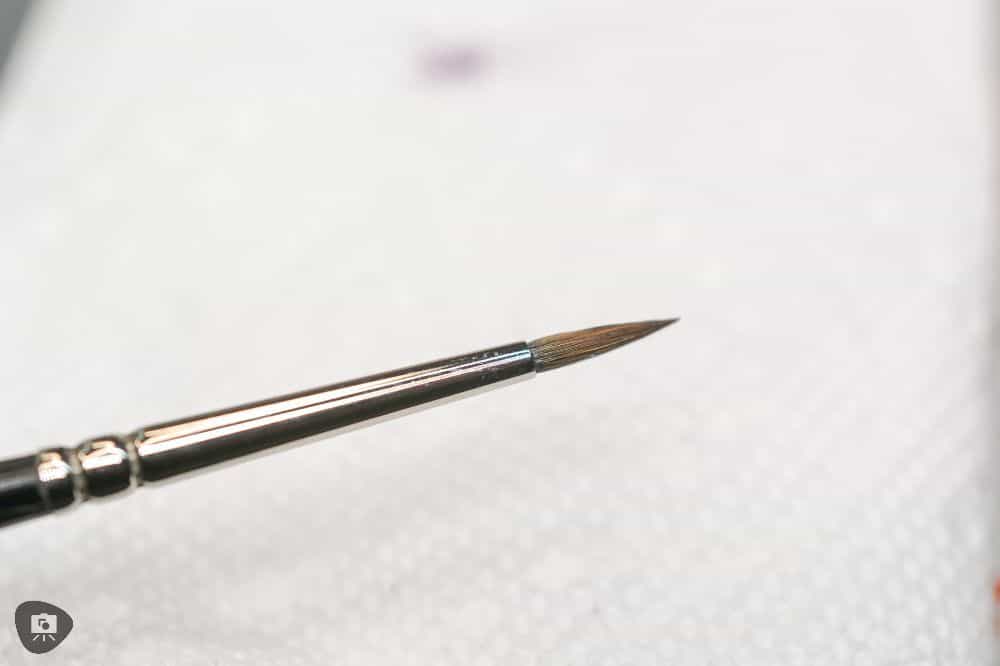
My suggestion is to look at the ferrule and find brushes that have smooth metal attachments near the tuft. These seem to be the better assembled miniature brushes. Often poorly made brushes feel a bit wobbly when you have a good grip on ferrule. It can be quite unnerving when you’re painting details.
Tuft (or bristles)

The tuft or cluster of bristles make up the working end of every paint brush. Through capillary action and other physical properties of liquids and material surface tension, the bristles in the tuft determine the working character of a paint brush.
There are an number of infinite factors that contribute to how well (or poor) a paint brush handles paint. For example, for good control over fine detail painting, you may want bristles with good snap and spring (e.g., the pressure you can apply before the bristles deform, and how easily the tuft returns back its original shape).
Keep reading to learn more about how these factors come into play when finding the best brush for your miniature painting hobby.
Natural or Synthetic Brush?
I recommend that everyone start with a natural hair brush. Here are the advantages of why you should choose natural sable brushes for miniature painting:
- Natural hair brushes of good quality hold their shape better than their synthetic counterparts. In this regards, sable brushes will give you a subtle and more predictable painting experience for a longer period of time.
- Sable or natural bristle brushes have better water retention ability than compared with synthetic brushes. This increases the capacity for the brush to hold wet pain, and will prevent paint from drying out while on the brush.
Note that more expensive synthetic brushes may have similar attributes of natural bristle brushes. But, these kinds of synthetic brushes tend to be less durable when you use them with acrylic model paints. A sable brush of similar cost will likely have better longevity.
Best Natural Brushes for Painting Miniatures?
There are two kinds of natural sable brushes you should consider for painting miniatures:
- Red Sable
- Kolinsky Sable
There are other kinds of natural hair brushes. These include horse hair, squirrel brushes, sabeline ox hair, or even camel hair brushes. Although all brushes have their applications, red sable and kolinsky sables are the top choice for miniature painters. Here’s why:
Red Sable
Red sable is your standard, best value natural tuft paint brush. A problem with deciding to buy a red sable paint brush is that their origin varies a lot. So, as you can imagine the quality and characteristics of red sable may behave differently across different paint brush brands.
Kolinsky Sable
Kolinsky Sable Kolinsky sable is the premium, highest quality sable available for miniature painters. For professional watercolor artists, and now in recent years miniature painters, Kolinsky sable is very popular among tabletop wargamers and scale modeling hobbyists. These brushes are also the favored brushes among professional studio artists. Kolinsky sable is soft, exhibits great spring and snap, and durable (e.g., Winsor & Newton Series 7).
Best Synthetic Brushes for Painting Miniatures?
Synthetic hair brushes are great for many reasons. Although they may not be as durable, or feel as nice to paint with than a good kolinsky sable brush, synthetic brushes have a strong place in a mini painter’s toolset.In general, synthetic brushes are less expensive, and sometimes are even mixed with natural materials.
Synthetic brushes are an excellent choice for the miniature painter who isn’t looking to break their budget. Modern high-end synthetic brushes have many of the qualities found in natural brushes. They can hold their shape, are resilient to abuse, and can be great for controlled application of paint.
The biggest issue I’ve found in my experience with synthetic brushes is that even the high quality brushes tend to have bristles that form into “hooks”, “curls”, or “curved” tips that won’t go away. You can work around these permanent deformation in the synthetic tufts, but if you have a tad of obsessive compulsive tendencies like me, then this will get on your nerves very quickly.

Here are 3 tips to prevent the curved hook tips on a synthetic brush:
- Don’t stab or jab the tip of your synthetic brush while you paint
- Rotate the sides of your brush as you paint, so keep the forces evenly distributed around the bristles
- If a tip or curl has formed, clean the brush thoroughly, and dip the tip in boiling hot water. Don’t dunk the entire brush otherwise you’ll melt the glue within the ferrule. Reshape the bristles back into their original shape. Rinse and repeat until you’re satisfied.
RELATED: AFFORDABLE SYNTHETIC BRUSHES FOR MINIATURE PAINTERS
Buying Guide for Paint Brushes for New Miniature Painters
Good paint brushes are assembled by hand, and with hairs that come from animals. For these reasons, you’ll never quite know what you get until try the brush. You should try and find these brushes in a local art store so you can try them out in-person.
If you can’t find these brushes locally, make sure you shop at an online store with a good return or replacement policy. I buy all my brushes from BLICKS Art Materials. They have brick and mortar stores in my area, but their online store sells everything you can find in-person.
What if you can only shop for brushes online? The less risky choice for buying brushes online is to shop for synthetic brushes. Machine-made synthetic brushes generally have better quality control across a brush line. A synthetic brush from a good company brand has less risk of arriving with serious flaws, e.g., split or frayed hairs.
The hobby brushes in your local game store are a good choice, too. Of the hobby paint brushes you find in local hobby stores, my favorite would be the Army Painter Regiment. The Army Painter Regiment doesn’t have a size number and is a mixed natural-synthetic brush. You can see a comparison of the Regiment hobby brush with other budget brands here.
How to Test the Quality of a Sable Hair Brush?
You should test your sable brushes before you buy them. Most art stores and craft places that are reputable will let you test-drive a brush before you buy it.
Here’s 5 things you can do to make sure the brush you are buying is a good one:
- Dip the brush in clean water. Ask the sales representative nicely to let you do this. Be gentle, you didn’t buy the brush, yet!
- Swirl the bristles around to remove any of the powder/binder that was used to hold the shape of the tuft. A brand new brush will have bristles that are tightly held together with a powdery substance. Wash that off.
- Flick the brush against your hand, then swirl the bristles again.
- Remove the brush and snap the handle against your wrist to get rid o the extra water.
- Did the tip of the bristle come back to a perfect round point?
- If yes, this is the sign of a really good brush.
- A brush that doesn’t have good spring or snap, you may have to use your fingers to reform the bristles back into a fine tip.
- Be wary if the bristles do not form into a sharp tip that is uniform around the entire circumference of the brush.
If you got to #5, and passed the wet-flicked test, confidently pay for the brush and bring it home. 😀
Quick Brush Care Tips
Follow the tips below to properly care for your kolinsky sable or synthetic paint brush:
- Rinse after every paint session and in-between color changes
- Try not to let paint dry too long, too far up the bristles near the ferrule
- Store your brushes flat on your table or upside down with the bristles down. Excess water that seeps up into the ferrule toward the handle will cause the wood and hairs underneath to swell. Use a horizontal brush holder for storing your favorite brushes.
RELATED: TIPS FOR BRUSH USE AND CARE
What Brush Should I Use for Most Miniature Painting Techniques?
For most uses, go for a brush with good snap. A snappy brush has a tip that holds its vertical shape after it is wet with paint and following application to a miniature. After applying paint, a snappy brush will have bristles that literally spring back into their original position, and preferably back into a sharp tip. This lets you apply paint consistently and predictably during a painting session.
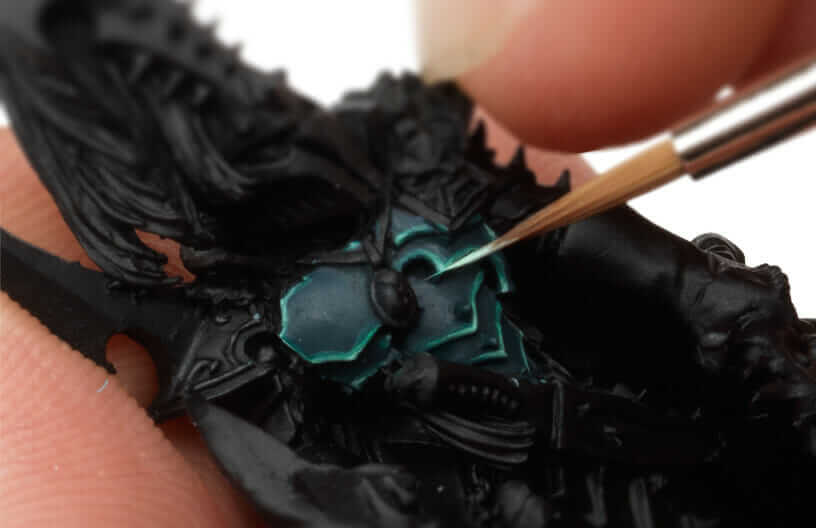
You need a soft or “floppy” brush when you want to be gentle to your working surface. Or, if you’re trying to create smooth blends of paint. A soft brush is useful when you need to apply heavy coats of wash over a delicate layer of airbrushed acrylic paint. Without varnish, under paintings are easily damaged. A floppy brush can help you paint more gently.
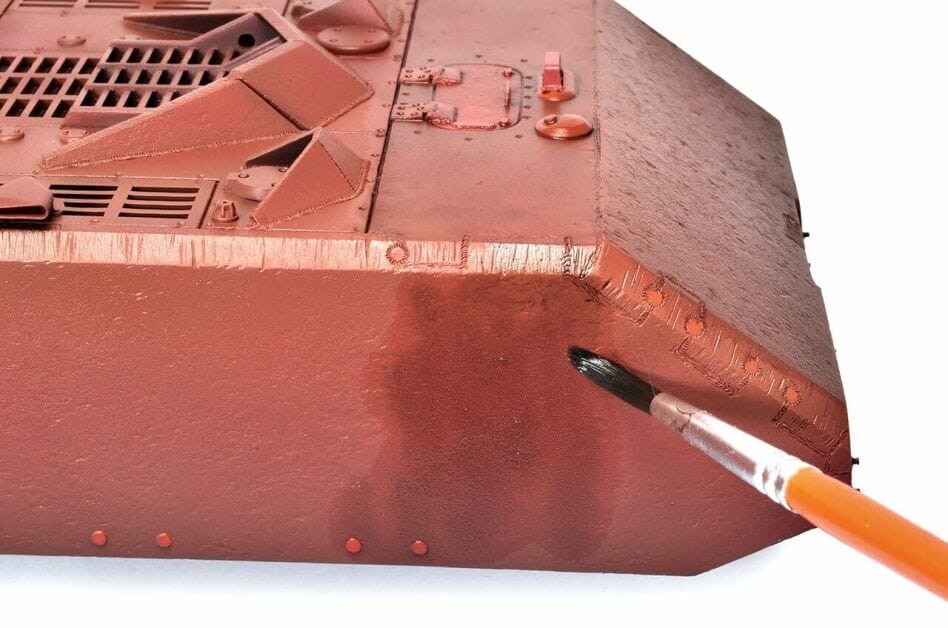
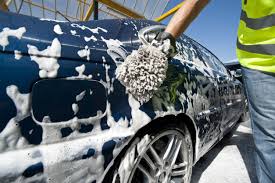
RELATED: ADVANCED PAINT BLENDING TECHNIQUES FOR MINIATURES
Tips for Choosing the Best Brush for Painting Miniatures
The best brush for miniature painting can significantly affect the overall appearance and quality of your miniature painting. If you’re looking to achieve a professional look, investing in the right tools goes a long way.
I’ve come to the conclusion that the best brush for miniature painting will have the following specific qualities:
- Natural, Kolinsky sable tufts
- Metal ferrules that do not use crimping to attach the tuft to the handle (crimping is a sign that the assembly isn’t of very reliable quality)
- Bristle or tufts should be shaped with a pointed round configuration
- Bristles with about 10 mm in length, and dense enough to form a circular even diameter of around 2mm
- The total responsiveness of the bristles should be snappy or springy enough to return to their total original shape following deformation after paint application, and while still wet (this should be tested in-person before purchase)
- The tips should be sharp and uniform without many stray hairs in a brand new brush (which could be a sign of underlying issues that arise later after real miniature painting use)
You can expect the cost of a brush with all of the above qualities to be between $15-35 USD. Although this may seem expensive compared to many craft level brushes, or those brushes you find in your local game store, getting the right brush for miniature painting can make learning the hobby more fun.

Conclusion
This is article is based on my experience and time with painting hundreds of models, for many years. I’ve scoured the internet, e.g., forums and social media, trying to see what the most popular brush type, size, material composition, and brands the professional artists use.
The most trusted and established paintbrush brands for miniature painters include brushes from Raphael, Artis Opus, Rosemary and Co., and Winsor & Newton.
My Two Favorite Brushes for Painting Miniatures
1. Winsor & Newton Series 7 size 1
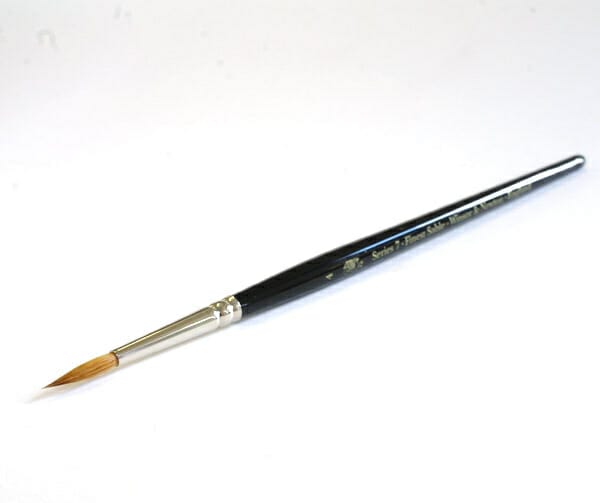
| Winsor & Newton Series 7 size 1 |
|---|
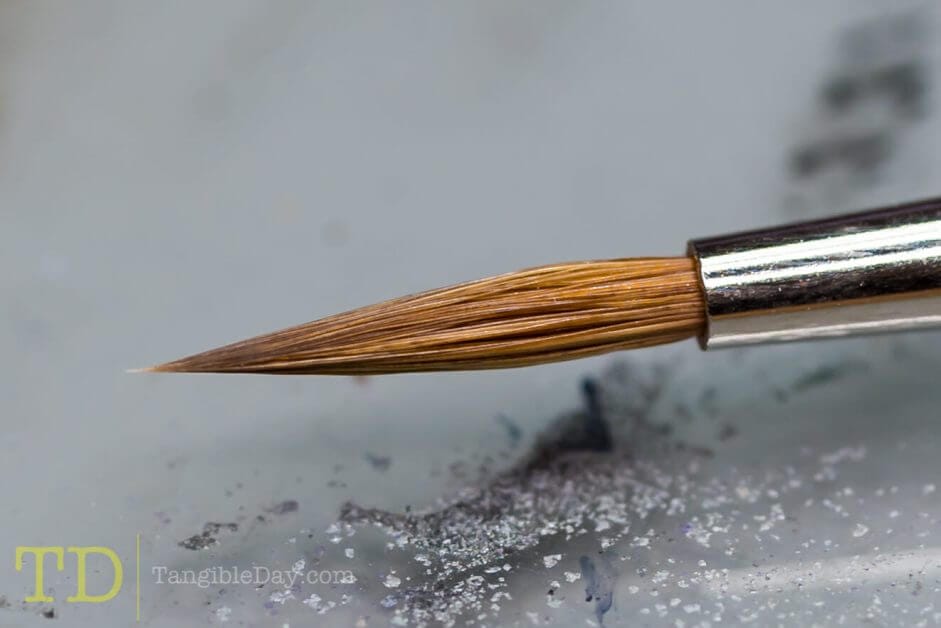 |
| Check Price on Amazon |
| Check Price on BLICK Art |
2. da Vinci Watercolor Series 10 Maestro size 1

| da Vinci Watercolor Series 10 Maestro size 1 |
|---|
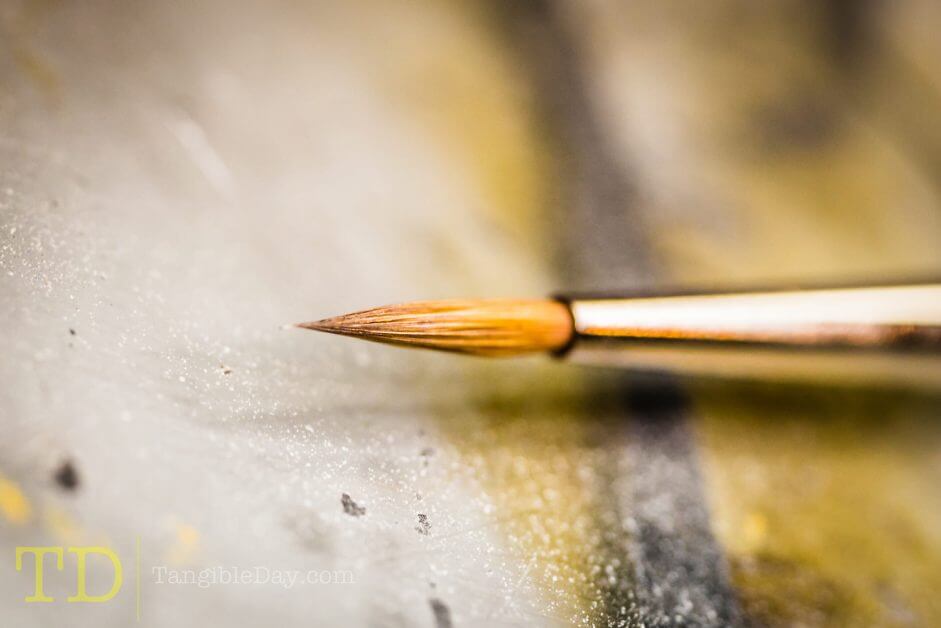 |
| Check Price on Amazon |
| Check Price on BLICK Art |
Examples of Models I Painted with a Winsor & Newton Series 7 Brush
(…excluding the base coat paint application, which I generally do with an airbrush)
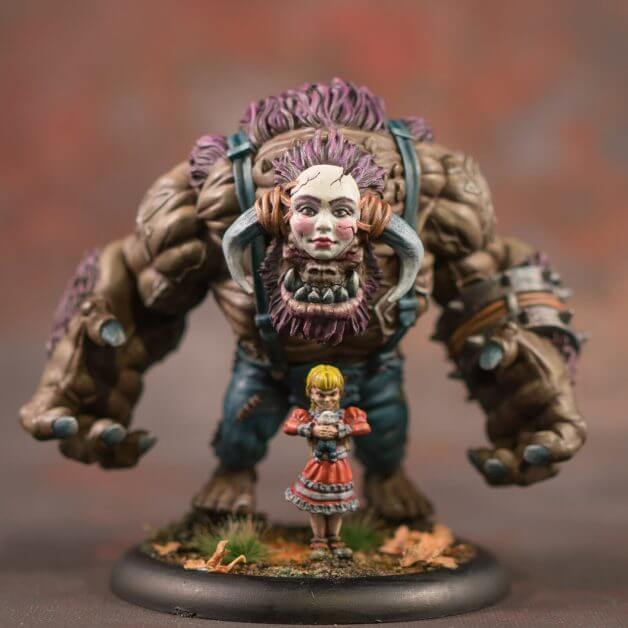

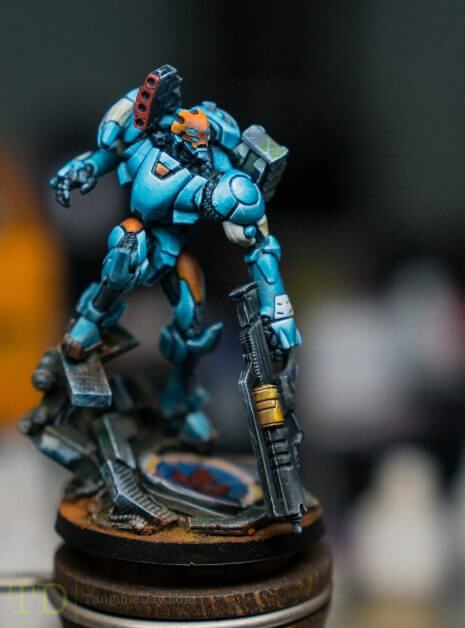





Tangible Day on YouTube (Miniatures and More!)

Agreed – W&N S7 for the fine details, and various cheap brushes for the rough work, and everything else.
Great advice! Will be sharing the entire page with some hobbyists that are new to the painting arena! 🙂
Been using W&N Series 7 for over 30 years myself! Love ’em 🙂
Awesome ! It’s a great hobby!
Nice article. I have used DaVinci brushes for years, and prefer them over the W&N 7’s.
Any preferences when it comes to synthetic brushes?
what is that amazing model at the top of the page?
“Imperatus” made by Privateer Press. It’s a mini for a tabletop game warmachine https://tangibleday.com/why-should-you-play-warmachine-hordes/
Hi! Thanks for the great article. I want to add that W&N Series 7 has two length of bristles short and long. When I decided to try W&N as hi-quality pro expensive brush I unfortunately ordered the short one #1. The short version is not so comfortable as long one. I didn’t buy another W&N 7 Series with long bristles due to high price. Instead that I buy much cheaper brushes by Russian manufacturers like Roubloff for example. https://www.roubloff.ru/en/ They did amazing siberian kolinsky brushes three or four or even five (they have different models) times cheaper then W&N. And they have a useful brush classification system where the brush size number equal its width in millimeters. I like very much the 301T series. It is premium quality brushes.
Yeah – I’m always on the look out for less expensive (but good) brushes. Thanks for the tip. I’ll check out the Roubloff and see what they are about.
I’ve recently encountered the curl at the tip of some of my synthetic brushes, the D’Artisan Shoppe Series XII 12 brush set on Amazon. I’m a fly fisherman & fly tier, so I used my finest fly tying scissors to snip off that curl and was pretty happy with the results!
Oh, nice tip (pun intended!) – the tip curl is an issue on almost all synthetic brushes unfortunately. I use a really sharp exacto to trim mine.
Pingback: The Best Brush for Miniature Painting (For All Levels)
Pingback: The Army Painter "Regiment" Brush Review for Miniature Painting - Tangible Day
These high-quality Winsor and Newton tiny paint brushes are among the best on the market. This tool is excellent for both complex strokes and precise painting. Thank you for recommending this.
Great bloog post
Pingback: Best Brush for Painting Miniatures and Models (Complete Guide) - Toy Newz
thank you for the article
Happy you found this helpful! 😀